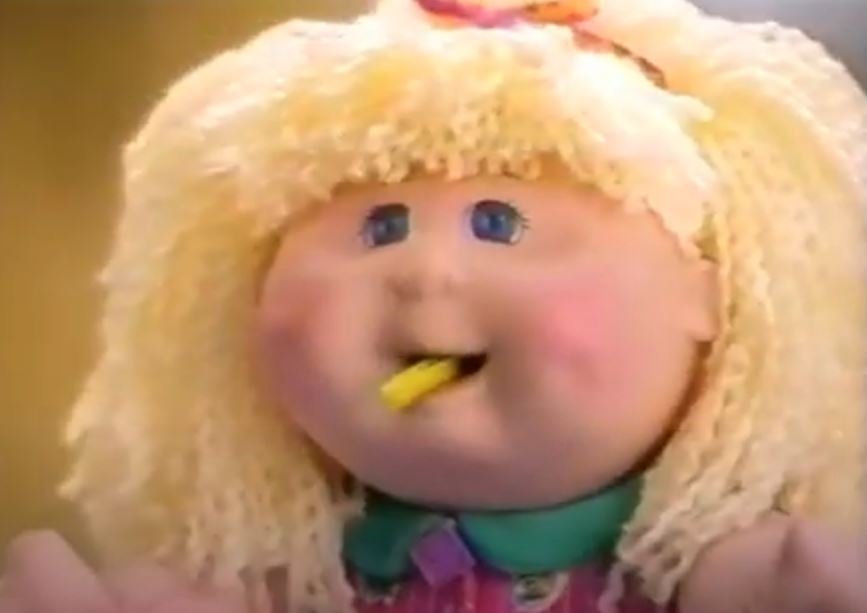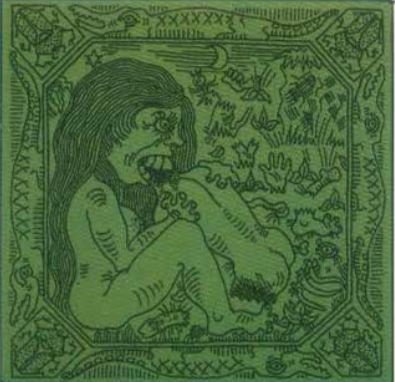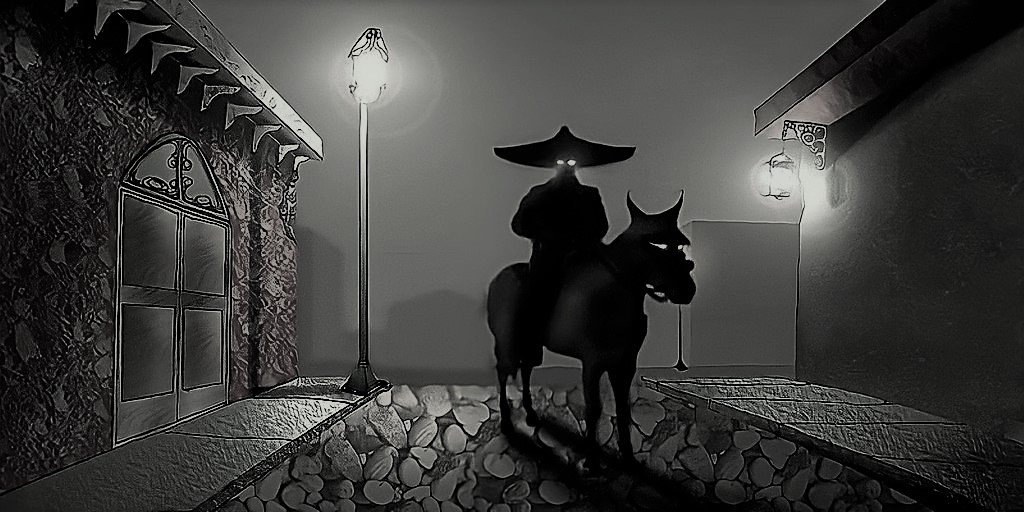5 Vampire Myths from Around the World
Myths and legends of vampires or similar beings go back hundreds and even thousands of years, so It’s no surprise that many cultures have their own version. We covered Aztec vampires, the Cihuateteo and the vampires of Scotland, the Baobhan Sith in the past but those barely scratch the surface of all the vampire mythology throughout history.
So, here are 5 more:
1. Jiangshi - Chinese Hopping Vampire
Around 1788 Chinese scholar Yuan Mei wrote a book entitled What the Master Would Not Discuss, the ‘master’ being a reference to Confucius. The book was a collection of 746 short stories that previously had been orally passed through generations and ranged in topics from the supernatural to sex and corruption.
Yuan Mei wrote that a person contained multiple souls in their body, three good huns, and seven evil pos. When someone died, their huns exited their body leaving only the evil pos which could convert the corpse into a Jiangshi. As the Jiangshi could not move around in the daytime, due to the sun accelerating their decay, a rooster’s call could keep them at bay.
But, according to folklore, there were other origins for the Jiangshi. One of the more popular versions says that when a person dies far away from their home, and their families cannot afford to travel to the place of death, they would hire a Taoist priest to bring them back.
Since the journeys were often long, the priest resorted to temporarily bringing the relative back from the dead in order to make the trip back. Depending on how long it took the priest to travel, these corpses ranged in appearance. Some were indistinguishable from a live person while others appeared to be rotting.
Due to rigor mortis, the corpse could not bend its limbs and, with its arms outstretched, had to rely on hopping to move forward. Once brought back to their home, the Taoist priest was able to lay the corpse to rest.
Another origin says that anyone who died a violent death or committed suicide would return as a Jiangshi at night. These Jiangshi were much more violent and actively sought out living creatures to drain them of their life force.
As opposed to the vampires who drain a person’s blood, the Jiangshi drained them of their qi (ch’i) or life force until they died. These Jiangshi were often depicted with long white hair, sharp long nails, rotting flesh, and a greenish-white skin tone due to a fungus or mold.
In some legends, the Jiangshi could be stopped by writing a sealing spell on a yellow paper talisman and placing it on their foreheads. But, some Jiangshi can drain enough qi and become powerful enough to the point where the talisman will no longer work.
As the decades went on and more stories were told of the Jiangshi, they evolved to have a thirst for blood and are now often depicted with fangs. During the late 20th century Jiangshi became popular villains in Chinese films; their powers, origins, and weaknesses changed or were altered based on what the movie needed, further diluting the original myths.
2. Vrykolakas - Greece
Like the Jiangshi, the stories and legends of the Vrykolakas have changed throughout the centuries, and like the Jiangshi, the Vrykolakas are not known to drink blood, instead, they were said to eat flesh, specifically the liver of their victims.
Leo Allatius
Way back in 1645, Greek Scholar Leo Allatius claimed that any who were evil or wicked as well as, having been excommunicated by a bishop could become a Vrykolakas upon death. Their bodies would swell up causing all their limbs to distend, yet the bodies were hard to the touch. Anyone who looked upon the creatures would die of fright but if they spoke to it, the Vrykolakas would disappear.
It was believed the devil controlled the Vrykolakas allowing them to walk around day and night and using them to spread disease through small villages. As the stories were so closely tied to religion, the only way to destroy a Vrykolakas was with prayer or fire.
After gaining the bishop’s approval, villagers could exhume the body on a Saturday, as that was the Vrykolakas day of rest, and pray until it dissolved. If that didn’t work the body would be cremated.
As the centuries went on, the myths of what a Vrykolakas could and couldn’t do changed. They gained the ability to haunt villages like a ghost but were unable to cross salt water. They lost their swollen appearance and, in some stories, shared traits with a werewolf.
Werewolves themselves could become a Vrykolakas hybrid upon death. Some Vrykolakas could kill their victims by sitting on their chests in the middle of the night before feasting on their bodies. This is a trait often associated with sleep paralysis demons in various myths throughout history.
What created Vrykolakas also changed; anyone who wasn’t properly buried, violent deaths or suicides, stillborn children, those who ate the flesh of a sheep after it was killed by a wolf, and even if a black cat passed over a dead body, were all incidents that could create a Vrykolakas.
Today, stories of the Vrykolakas have evolved to contain many aspects of other supernatural creatures, werewolves, revenants, incubus, zombies, etc. Like many of those creatures, belief in the Vrykolakas has also diminished… for now.
3. Los Biembiens - Bahoruco Mountains, Dominican Republic
In the Bahoruco Mountains of the Dominican Republic, there are said to live groups of wild beasts that hunt in the night. According to legend, these groups were once slaves who escaped their Spanish captors.
Although there isn’t a lot of information on the biembiens, stories tell us that after a couple of groups of slaves escaped, they had no choice but to hide out in the Bahoruco Mountains. As time went on they began to transform into monstrous creatures with sharp teeth and long claws which helped them become more agile.
The biembiens were said to only go out hunting at night, jumping from tree to tree, and over time had developed a taste for human entrails. In other cases, the biembeins captured humans to use for sacrifice. It’s said that if you go to the Bahoruco Mountains, you should listen out for sounds of grunting or gurgling as the biembiens lost their ability to speak long ago.
It wouldn’t be surprising to learn that the stories of the biembiens were created by the Spanish enslavers in order to prevent slaves from escaping into the mountains. Conversely, it would also make sense for the stories to have been made up by the slaves in order to prevent their captors from chasing them into the mountains. Either way, we might never know for sure how the legends of the biembiens started.
4. Asanbosam and Sasabonsam - Ghana, West Africa
These vampire-like creatures belong to the folklore of the Akan people in Africa and live in atop the tall trees of the rainforest. According to the myths, the Asanbosam are hairy with bloodshot eyes, iron teeth, and curved feet resembling hooks that they use to hang upside down from trees.
Luckily these creatures do not travel outside of their territory, instead, they wait for unsuspecting travelers or hunters to enter. Once spotted the Asanbosam grab the trespassers, rip out their throats, and use their hooked legs to drag them up into the trees.
Usually, the victims were eaten with only their bones thrown down onto the ground but, if the Asanbosam is filled with venom, it would convert the victim into another Asanbosam.
The Sasabonsam and the Asanbosam share many similarities and are sometimes considered the same being but, there are slight differences. In other stories, the Sasabonsam is said to be a more ferocious creature and the enforcer of the forest.
Sasbonsam statue from the British Museum
According to Akan beliefs, the goddess of the earth is Asaase Yaa and no one is allowed to farm or enter the forest on Thursdays in order for the land to heal. If one chooses to disobey the rules, the Sasabonsam is sent to deal with them.
This creature (some believe there is only one immortal Sasabonsam) resembles the Asanbosam but also has a snake-like tail, large batwings spanning up to 20 feet, and large pointed ears.
Once the Sasabonsam identifies its prey, it will usually stalk them for some time, even toying with them if they’re bored. Using its tail the Sasabonsam will tap the shoulder of its target from behind multiple times for fun. When the Sasabonsam feels like it, it will drop down, envelope the victim, and use its teeth to drain them of their blood.
After the victim is drained, the Sasabonsam leaves the body for other animals to eat. Other stories say the Sasabonsam leaves the body so its children can it eat it, these children happen to be the Asanbosam.
5. Brahmaparusha / Brahmarakshasa - Rajasthan, India
These vampires are often considered demons or demon-vampire hybrids making them extremely violent and bloodthirsty. According to Hindu mythology, Brahmarakshasa were once religious teachers and scholars who used their knowledge for evil or have committed acts of pure evil. After their deaths, they return to the land of living as these demonic creatures.
When night falls and the Brahmarakshasa goes out to hunt, they wear the intestines of their previous victims on their heads while carrying their empty skulls. Upon finding a new victim, they’ll attack and bite them in the neck until blood starts flowing out. The Brahmarakshasa fill their skull cup with the new blood and drink from it, dancing around as their victim dies.
Once dead and drained of all blood, the Brahmarakshasa rip open their victim’s skull, eat their brains, and place their intestines around their neck as a trophy. According to legend, when they hunt, these demonic vampires never just stop at one victim, and terrifyingly, there appears to be no way to stop them.
Other Sources
Brahmarakshasa Image - Chaitnyags, CC BY-SA 4.0, via Wikimedia Commons
Sarah Bartlett, Guide to The World’s Supernatural Places, National Geographic, 2014
Brenda Rosen, The Mythical Creatures Bible, Sterling Publishing Co., 2009
Learn a Little Bit of Everything!
Myths, Mysteries, & Monsters
















